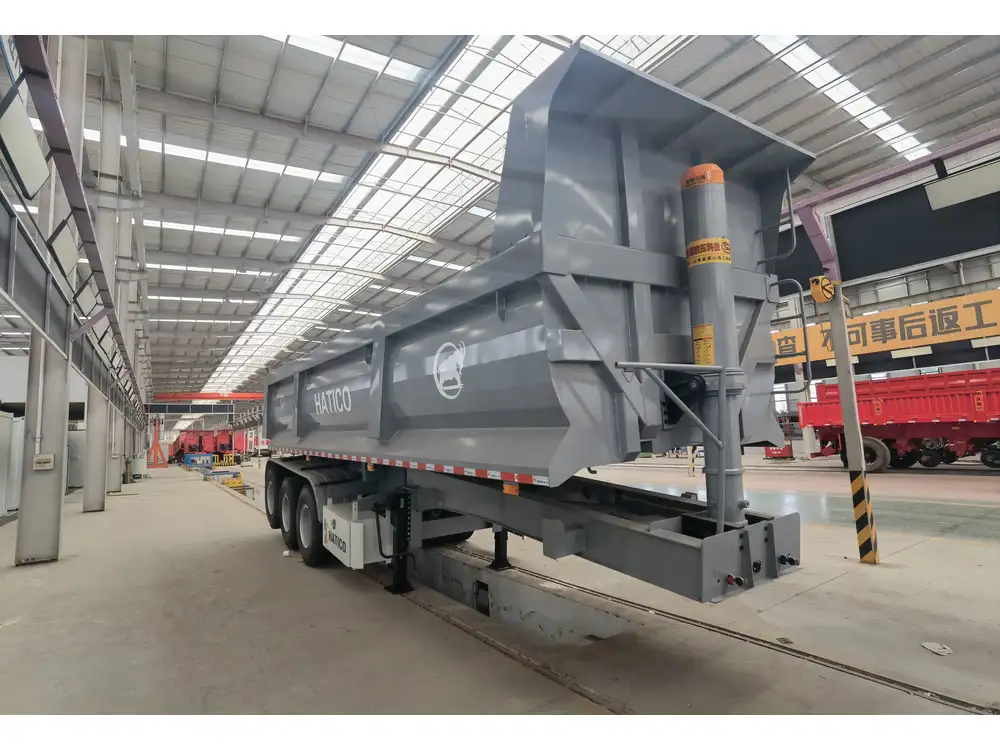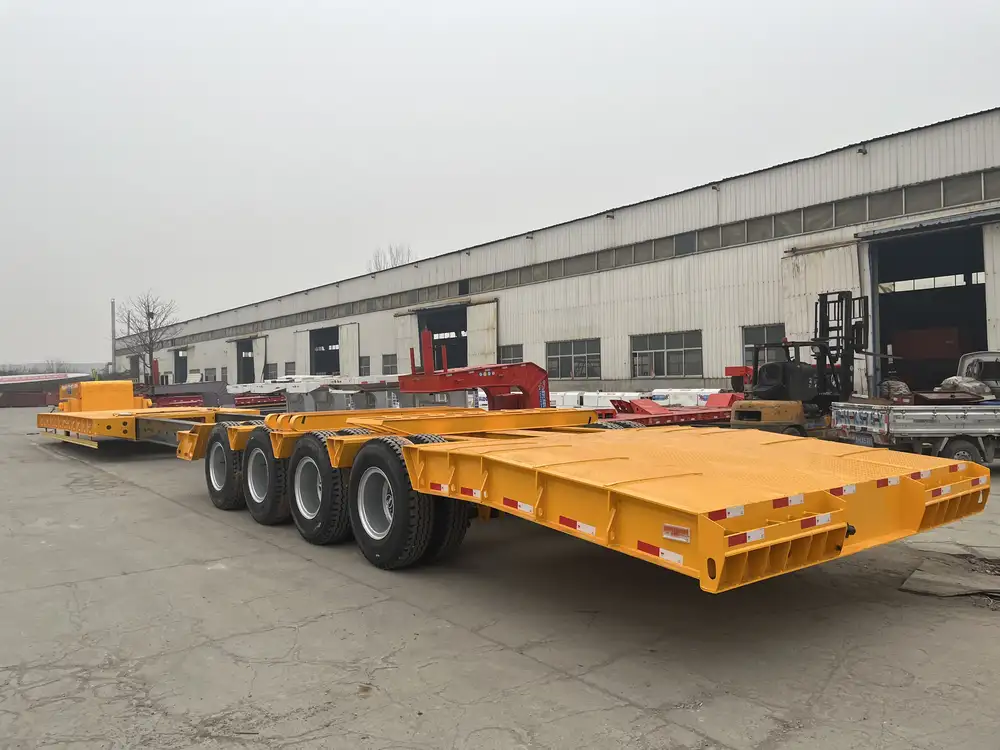When considering investment in logistics and freight transport, understanding the dimensions of a standard semi-trailer is crucial. This knowledge not only aids in equipment selection but also ensures compliance with transportation regulations, optimizing your supply chain’s efficiency. In this article, we will dissect the measurements of semi-trailers, explore their variations, and provide essential information for manufacturers, fleet operators, and trucking enthusiasts.
The Standard Semi-Trailer Size
Common Lengths and Widths
A standard semi-trailer typically measures 53 feet in length and 8.5 feet in width. This size has become the industry norm, especially for freight operations in the United States. However, variations exist based on specific applications, cargo types, and legal regulations across different states.
| Trailer Size | Length (Feet) | Width (Feet) | Height (Feet) | Weight Capacity (lbs) |
|---|---|---|---|---|
| Standard | 53 | 8.5 | 13.5 | 40,000 |
| Legal Limits | 48 | 8.5 | 13.5 | 40,000 |
| Specialty | 40 – 48 | Varies | Varies | Varies |

Height and Weight Considerations
The height of most standard semi-trailers ranges from 13.5 feet to 14 feet, although some specialized trailers may extend that height — for instance, those designed for intermodal freight transport. The maximum weight legally permitted (including the tractor and trailer) is often 80,000 lbs, but this varies depending on the number of axles and specific state regulations.
Types of Semi-Trailers and Their Dimensions
Different sectors within the transportation industry utilize various types of semi-trailers, each with unique specifications tailored to their cargo requirements. Below are notable categories:
1. Flatbed Trailers
- Length: Standard lengths vary between 48 and 53 feet; wider options are available for oversized loads.
- Width: Typically 8.5 feet.
- Height: Generally set to accommodate loads both above and below standard levels.
- Features: Open design for easy loading and unloading.

2. Reefer Trailers
- Length: Commonly 53 feet.
- Width: Standard 8.5 feet.
- Height: 13.5 to 14 feet, designed to accommodate refrigeration units.
- Features: Insulated and equipped with a refrigeration unit, suitable for temperature-sensitive cargo.
3. High Cube Trailers
- Length: Generally 40 to 53 feet.
- Width: Standardly 8.5 feet.
- Height: Allows for an interior height of 13.5 feet to optimize cargo space.
- Features: Enhanced cargo capacity due to increased height.
4. Tanker Trailers
- Length: Typically around 48 feet.
- Width: Standard at 8.5 feet.
- Height: Generally lower than flatbeds to enhance stability.
- Features: Designed to carry liquids; bobtail configurations for ease of maneuverability.

5. Lowboy Trailers
- Length: Ranges from 48 to 53 feet.
- Width: 8.5 feet.
- Height: Low center of gravity for transporting heavy machinery.
- Features: Designed with removable sections to accommodate larger loads.
The Importance of Knowing Standard Semi-Trailer Dimensions
Regulatory Compliance
Adhering to specific dimensions not only ensures compliance with the Federal Motor Carrier Safety Administration (FMCSA) but also mitigates the risk of fines and potential legal issues. Each state in the U.S. may impose its own restrictions affecting the permissible height, length, and weight of transported goods. Knowledge of these regulations is imperative for efficient fleet management.

Optimization of Cargo Space
Understanding the dimensions of semi-trailers allows operators to maximize cargo space effectively. By knowing what types of trailers are available and their respective dimensions, businesses can choose the appropriate trailer based on their cargo types, ensuring they capitalize on optimal space utilization.
Cost Efficiency
Efficient utilization of trailer space leads directly to cost savings in the logistics chain. When businesses understand the capacities of their trailers, they can improve load planning, thereby reducing transportation costs and maximizing revenue.
Dimensions by Trailer Configuration
| Configuration | Length (Feet) | Width (Feet) | Height (Feet) | Typical Use |
|---|---|---|---|---|
| Standard | 53 | 8.5 | 13.5 | General freight |
| Reefer | 53 | 8.5 | 13.5 | Temperature-sensitive items |
| Flatbed | 48 to 53 | 8.5 | 3.5 | Construction equipment |
| Tanker | 48 | 8.5 | 13.5 | Liquid transportation |
| Lowboy | 48 to 53 | 8.5 | 1.5 | Heavy machinery and equipment |

Factors Affecting Semi-Trailer Size
Understanding the factors affecting the dimensions of semi-trailers can illuminate possible adaptations your fleet might need. Specific usages often require unique configurations:
1. Type of Cargo
- Heavy Loads: Require lowboy trailers with broader axles and lower decks for stability.
- Temperature-Controlled Goods: Demand reefer trailers adjusted to various temperature regulation needs.
2. Loading and Unloading Conditions
- Forklift Access: Flatbed trailers may be more useful in environments where loading equipment can drive straight onto the trailer without space constraints.
- Urban Areas: May necessitate shorter trailers to navigate tight spaces and avoid height restrictions.

3. Distance and Road Conditions
- Long Hauls: Full-height trailers offer greater capacity, while lower trailers are better for short trips on rough terrains.
- Weather Conditions: Rain, snow, and wind can influence how the weight is distributed and the height clearance required.
How to Choose the Right Semi-Trailer Size
Key Considerations
- Cargo Type and Weight
- Loading Accessibility
- Destination Regulations
- Operational Costs

Decision Matrix
| Factor | Best Configuration | Recommended Solutions |
|---|---|---|
| Overweight Cargo | Lowboy | Utilize permits for legal compliance |
| Temperature-Sensitive | Reefer | Ensure refrigeration capacity fits cargo’s needs |
| Bulk Loads | Flatbed | Employ tarping systems for safety |
| Standard Freight | Standard Trailer | Ensure optimal weight distribution |
Conclusion
Understanding the dimensions and variations of semi-trailers is essential for efficient logistics management. Whether you are a manufacturer, fleet operator, or a transport enthusiast, knowing the standard and specialized sizes of these crucial transport vehicles equips you to make informed decisions that can save money, boost operational efficiency, and ensure compliance with regulations.
In essence, the right semi-trailer can significantly impact your supply chain performance, providing the capability to meet your transport challenges head-on. By leveraging this comprehensive knowledge, stakeholders can streamline their logistics operations and foster sustainable growth within the industry.



